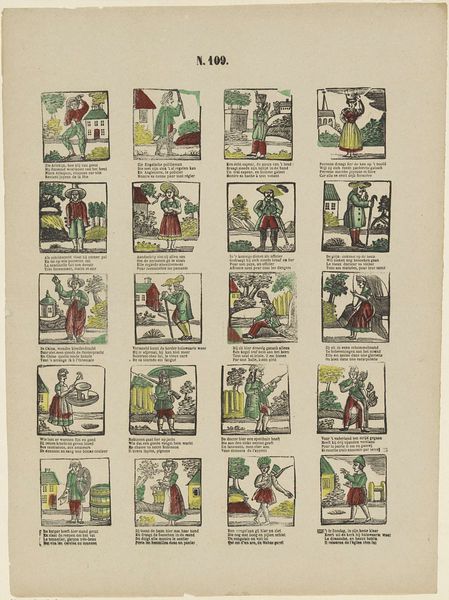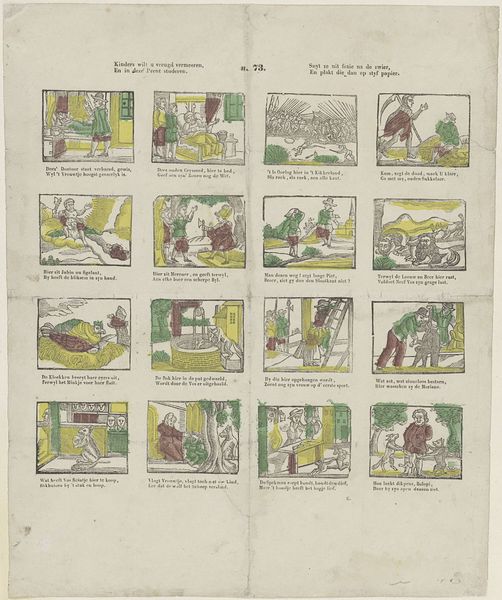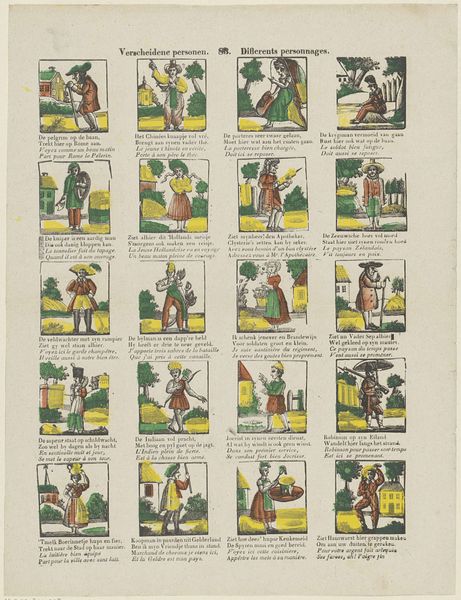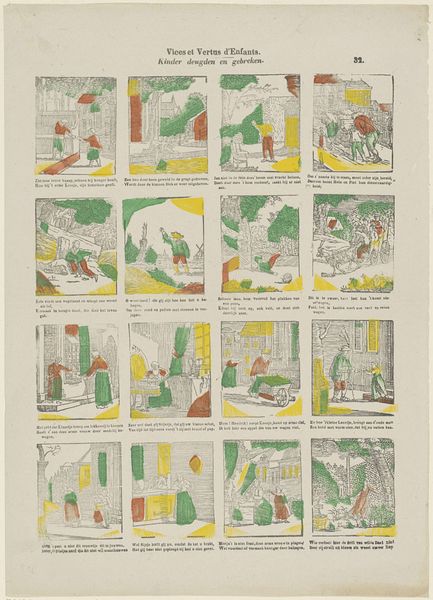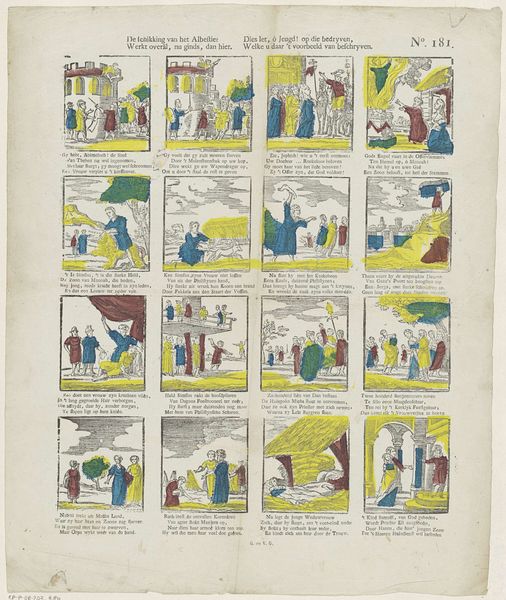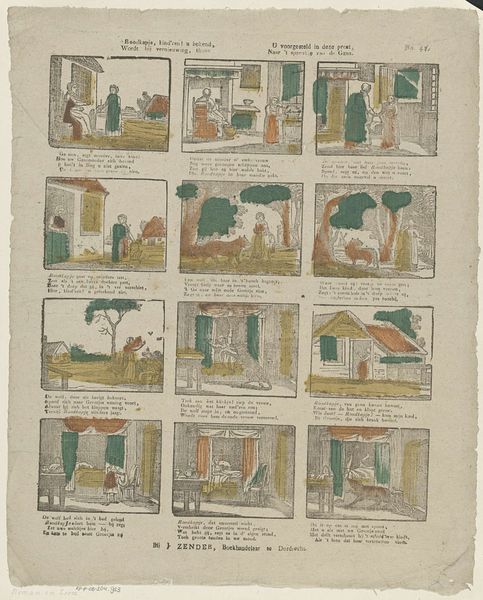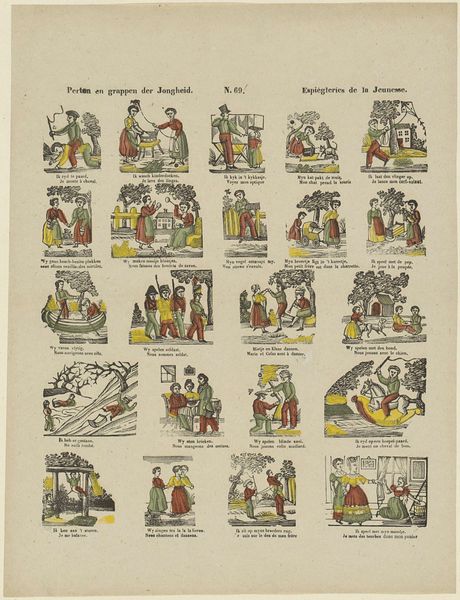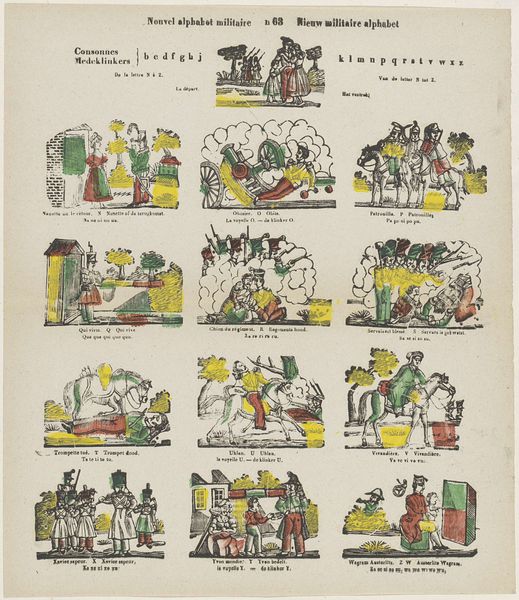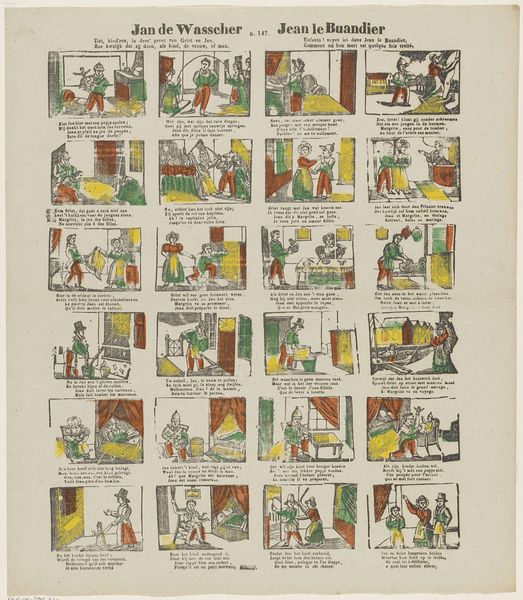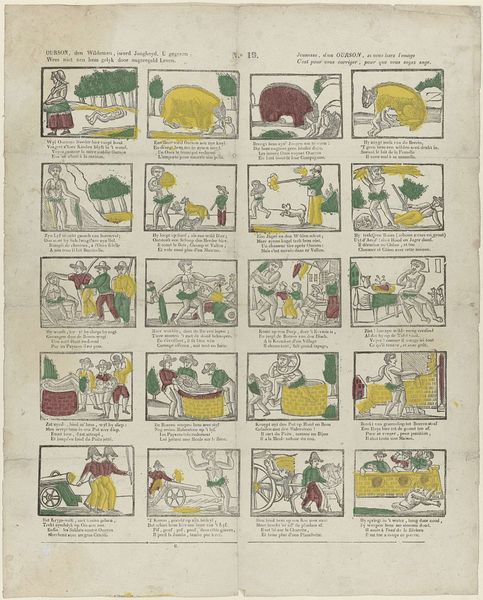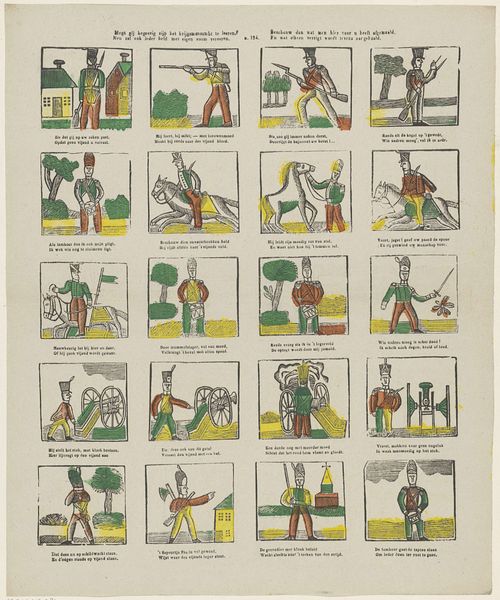
Ziet, Kindren ! afgebeeld een reeks van Liên, wien handel / In velerhande slag van waren, by hun handel, / Langs straet en grachten, schoon in 't klein, bestaet. Zoo vindt, / Elk op zyn wys, den kost, dien men dus eerlyk wint 1851 - 1880
0:00
0:00
graphic-art, print, engraving
#
graphic-art
#
comic strip sketch
# print
#
comic
#
genre-painting
#
engraving
Dimensions: height 397 mm, width 326 mm
Copyright: Rijks Museum: Open Domain
Curator: Editor: Okay, so this graphic art piece, "Ziet, Kindren!" by J.A. Aldag, dated between 1851 and 1880, presents a grid of scenes. It almost looks like an early comic strip depicting various tradespeople. I'm immediately struck by how it seems to portray work. What catches your eye? Curator: What intrigues me is the raw documentation of labor here. This print is clearly preoccupied with the material conditions of everyday life. Notice how each scene carefully depicts the products being traded, the tools used, and even the clothing of the workers. What does this meticulous representation of materiality tell us? Editor: I suppose it highlights the importance of commerce and trade to daily life in that time. It's like a catalog of different trades and goods available to people. Is there a social commentary here as well? Curator: Absolutely. The very act of documenting these "everyday" trades elevates them, challenging traditional boundaries between high art and craft. We should also consider the means of production. It's an engraving, suggesting it was intended for relatively wide circulation. This points to a democratizing impulse, wouldn't you agree? Who had access to art? What's missing from the representations? Editor: That's an interesting point! I guess I hadn't thought about how the print medium itself speaks to the social context. Hmm, maybe it's romanticized, ignoring harsh working conditions, because the illustration is very cute and fun. Curator: Precisely. We're presented with a view and not a story, not even a slice of life. Remember to bring the lens of production to consumption. Editor: Thinking about the piece this way, emphasizing materials and process, really reframes my understanding of it. Thanks! Curator: A materialist perspective can always reveal the intersection of labor, value and representation. It was good to examine with you, together!
Comments
No comments
Be the first to comment and join the conversation on the ultimate creative platform.
